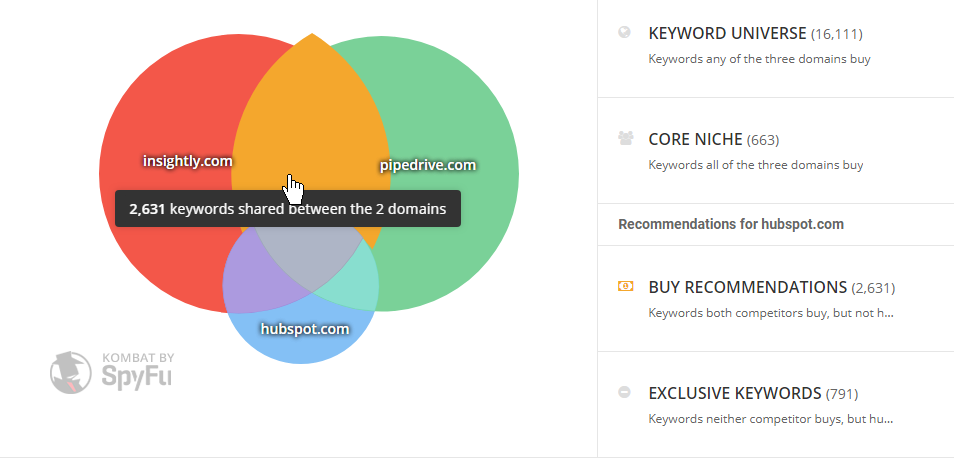With the abundance of information about perks of competitor analysis on the internet, many marketers still don’t take full advantage of it. Usually, they say something like this:
- “We have an established workflow and we don’t need to do more”
- “We don’t have enough time to do it”
- “The benefits of competitor analysis are vague”
- “We don’t know where to start”
These excuses are as common, as they are dangerous for building a successful internet marketing strategy. Neglecting data puts your decisions at risk of being ineffective. That could turn harmful to the company’s future.
With that being said, any marketing strategy, including digital marketing, should start with competitor analysis. An SEO strategy is no exception.
Before running keyword research, starting a link building campaign or investing into content marketing, you need to make sure you know the ropes and feel confident in your competitive landscape. Otherwise, how can you make a better product if you don’t know what kind of product your competitors are offering?
Why bother with competitive research?
First of all, it’s easier to capitalize on the ideas that other companies have success with than to invent the new ones from scratch. Second, avoiding the mistakes that your competitors made puts you in a stronger position. And last but not least, knowing what your competitors are up to in search helps you make better informed decisions, and as a result, create a winning SEO strategy. After all, forewarned is forearmed, and here’s what you need to be forewarned about.
1. Know for sure who your competitors are
One of the common misconceptions among marketers is that they know for sure who they are up against. You might have heard of it, but it’s not always that obvious. First of all, your offline and online competitors are not always the same companies. In SEO, your competition is not just those who provide similar products or services; it’s also all kinds of media and informational resources that occupy the SERPs for the keywords that people use to find your website. Moreover, website rankings can drop overnight with a fling of a search algorithm update completely changing the leaderboard.
Tools like SpyFu allow you to determine your website’s organic competitors based on how many SEO keywords your domains have in common. Knowing who ranks for the same set of keywords can help reveal an unknown competitor. Type in the name of your domain — and get a clear look at your competitors’ digital strategy.
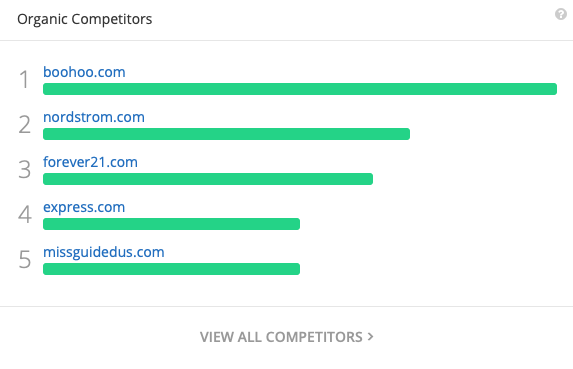
There’s also a way to spot your future SEO rivals: look at the paid search leaderboard.
Yes, that’s right! Companies that have recently entered the market usually don't rank too well in Google. They go heavy on PPC in order to cut the line to the top of the search results. As you’ll see in the Paid Competitors chart, these are not the same sites as your organic competition. They might be not as strong in SEO yet, but that’s only a matter of time, so you’d better be prepared.

By clicking on the "View All Competitors" you'll be sent to an expanded report on your competition with the amount of keywords, monthly clicks and even their estimated SEO value.
Also, don't forget to check the historical data that SpyFu shows (for up to 5+ years). By default, this graph is built based on your top 5 competitors but you can update this list with other sites that you want to review. The historical data demonstrates how your competitors have been building their SEO strategy along the way and how much time it took them. And moreover, it can help you estimate the amount of traffic that you’ll be able to receive if you manage to outrank them.

These steps are a part of the initial competitor analysis. Moving further, there is no need to revise this list too often. SEO takes time, and dark horses rarely come out of nowhere. However, it makes sense to check up on your competition every other month plus at the beginning of each big campaign.
So, once you know who you are sharing the SERPs with, you need to take advantage of that knowledge and find opportunities to outrank them.
2. Find out what keywords your competitors rank well for (and you don’t)
Apart from other important factors, such as technical performance and backlink profile, your competitor’s SEO capital lies in their keywords. The biggest opportunity to catch here is the keyword gap, that is, the valuable keywords in your niche that your competitors rank well for and you don’t.
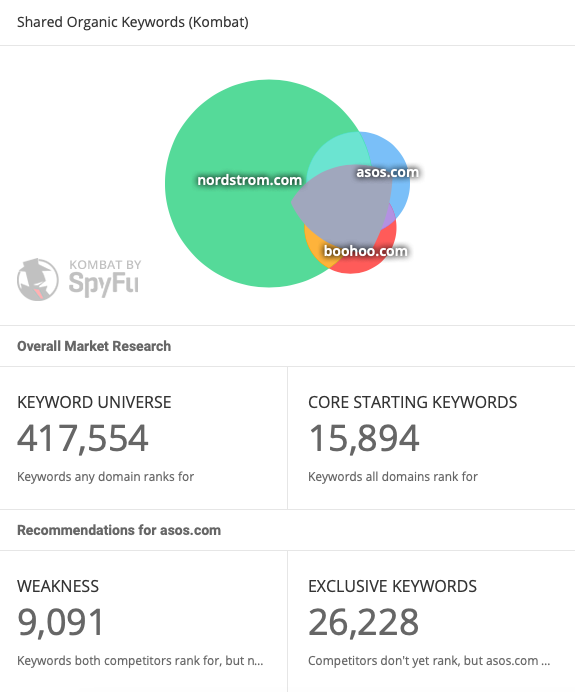
If you need to check that gap at a glance, you can do it directly from the SpyFu dashboard by only typing in the domain’s name.
For more detailed information on the keyword overlap, you can go to the Kombat report. It shows you not only the common and unique keywords, but also their volume, CPC estimate and ranking difficulty. The latter is based on several factors such as the strength of the competing domains, on-page signals like “keyword in title” and the number of .gov and .edu domains in the search results. All this can help you determine what keywords it makes sense to fight for and what are not worth the effort.

So, after revealing that keyword gap, you can adjust your SEO strategy to start ranking for those missing keywords. That could mean, for example:
- add them to your existing content
- create new pieces specifically to incorporate those keywords
- refine on-page elements on the pages with the desired keywords
- build links to the pages that contain them but don’t rank too well
You can export this list to a spreadsheet for future research.
3. Competitor analysis through their PPC behavior
Let's venture outside SEO for the next idea. That in itself will give you an advantage others don't think of. Look deeper into your competitors' paid search efforts. It’s important to understand how your direct and indirect competitors behave in PPC.
It’s no secret that many companies combine SEO and PPC to maintain their presence on the SERPs. But quite often, PPC is used for keywords that the website does not rank too well for in order to cut the line to the top of the SERP.
Knowing what keywords your competitor is bidding on can show you:
- what are their best selling items and key products/services;
- what keywords are their most desired targets and if you can incorporate them into your SEO strategy.

See where your competitors are getting their links from
Still a crucial part of any SEO strategy links help build a website’s authority. This works in the eyes of people and search engines. If you’re looking to build a strong backlink profile, your links should come from websites that are highly relevant to your industry and the search for those can be tedious. What’s the workaround? Once again, to take advantage of competitive research.
Just like with keywords, your biggest opportunity here is the backlink gap. It shows all the domains that link to your competitors’ websites and not to yours.
In the Backlinks report, you can input your competitor’s domains to see what websites are linking to them. Do you have smilar content? You have every reason to go after the same links.
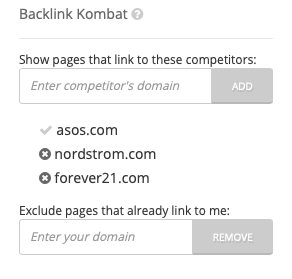
Websites that link to multiple competitors are likely to add a link to another site. The site runners clearly don't have a problem linking out, so they should be your first target.
The Backlinks Outreach tool will help you on the next step when you need to contact those websites. No need to juggle multiple apps and software: all you need to do is upload the list of domains/pages that you want to get a link from. Then the tool will automatically scrape them for contacts and allow you to manage the outreach process in one place.
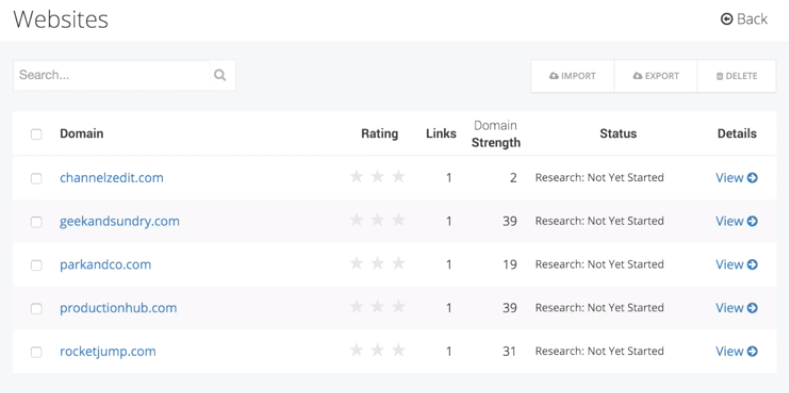
Conclusion
It's hard to get out of the comfort zone and apply new techniques in aspiration to achieve better results. However, competitive analysis is not that complicated to incorporate into your workflow. You can tackle the analysis that I showed in this post in just 10 minutes. The insights that it provides can be invaluable to build a successful SEO strategy.
